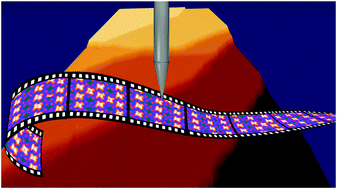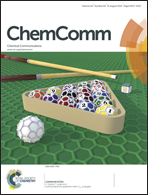Studying the dynamic behaviour of porphyrins as prototype functional molecules by scanning tunnelling microscopy close to room temperature
Abstract
Scanning tunnelling microscopy (STM) enables us to directly observe the dynamic behaviour of organic molecules on surfaces. While imaging atoms and molecules using STM is certainly fascinating by itself, corresponding temperature-dependent measurements allow for the quantitative determination of the energetics and kinetics of the underlying molecular surface processes. Herein, we review recent advances in the STM investigation of the dynamic behaviour of adsorbed porphyrins at and close to room temperature. Three different case studies are discussed, providing insight into the dynamics of diffusion, rotation, reaction, and molecular switching at surfaces, based on isothermal STM measurements. The reviewed examples demonstrate that variable temperature STM can be a suitable tool to directly monitor the dynamic behaviour of individual adsorbed molecules, at and close to room temperature. Free base porphyrins on Cu(111) proved to be particularly suitable for these studies due to the strong bonding interaction between the iminic nitrogen atoms in the porphyrin macrocycle and the Cu substrate atoms. As a consequence, the corresponding activation energies for surface diffusion, self-metalation reaction and conformational switching are of a magnitude that allows for monitoring the processes at and around room temperature, in contrast to most previous studies, which were performed at cryogenic temperatures. The kinetic analysis of the surface diffusion and self-metalation was performed using an Arrhenius approach, yielding the corresponding activation energies and preexponential factors. In contrast, the conformational switching process was analysed in the framework of transition state theory, based on the Eyring equation. This approach provides a more detailed insight into interpretable thermodynamic potentials, i.e., the enthalpic and entropic contributions to the activation barrier. The analysis shows that at room temperature the adsorption and switching behaviour of the investigated free base porphyrin on Cu(111) is dominated by entropic effects. Since the entropic energy contribution vanishes at low temperatures, the importance of experiments conducted at temperatures close to room temperature is emphasized.

- This article is part of the themed collection: Scanning Probe Studies of Molecular Systems

 Please wait while we load your content...
Please wait while we load your content...